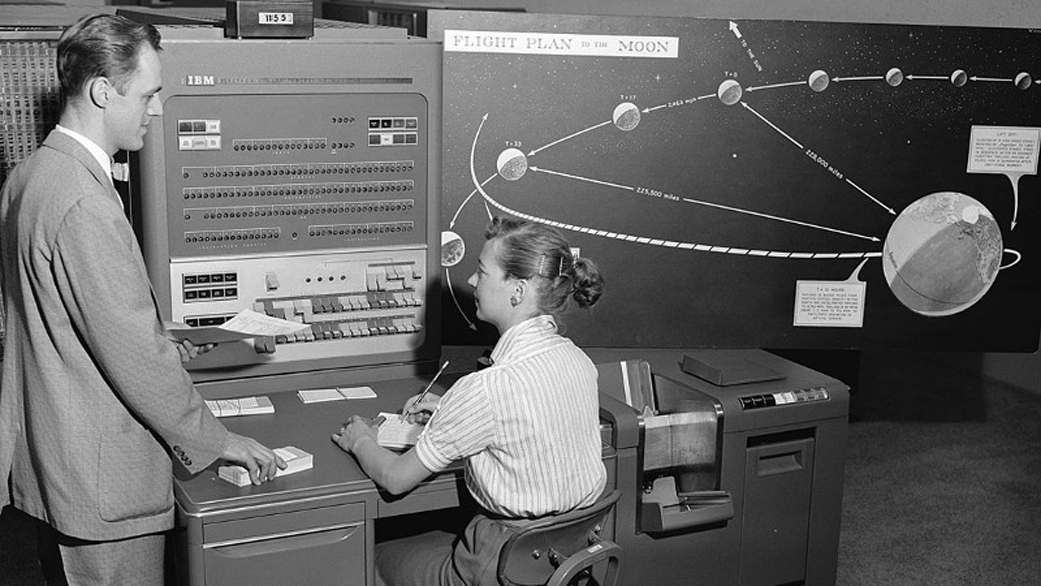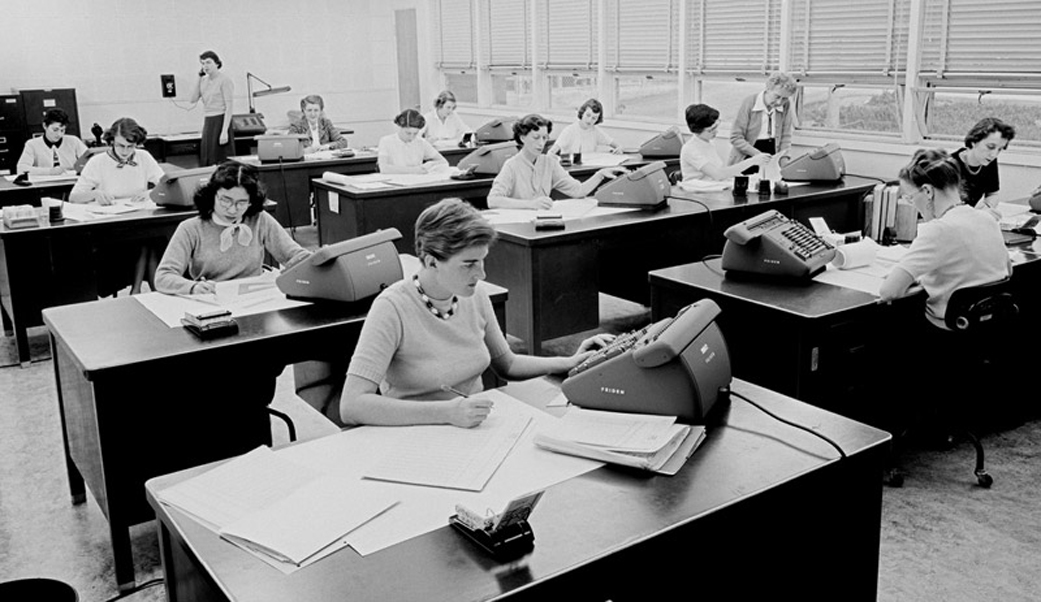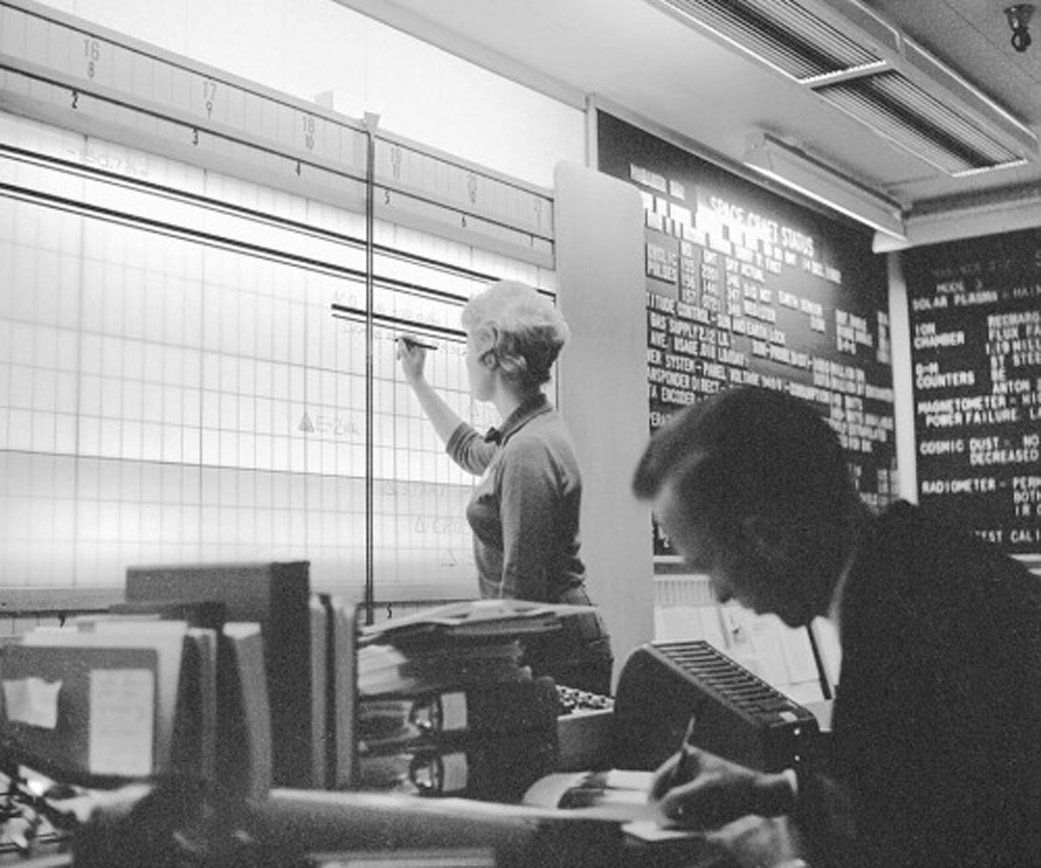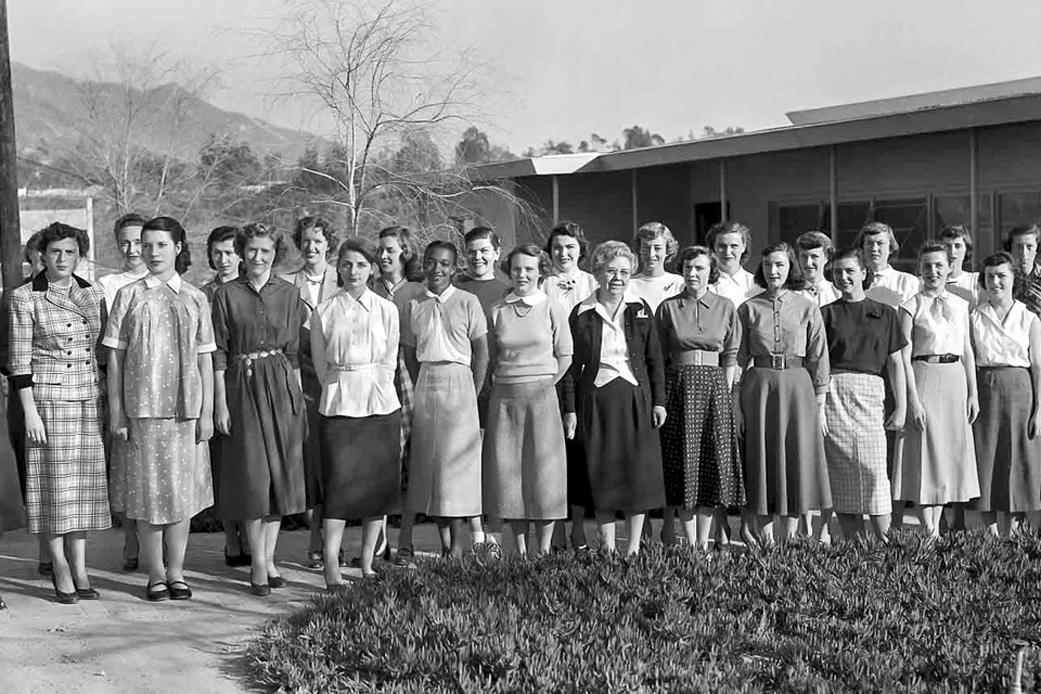The Women Computers of NASA's Jet Propulsion Laboratory (Slideshow)
Computer, Meet Computer
Before electronic computers were widely available, NASA and other organizations relied on "human computers," mostly female mathematicians, to make vital calculations supporting early theory and experimentation. In honor of the 80th anniversary of NASA's Jet Propulsion Laboratory (JPL) in California — it was founded on Halloween, 1936 — the agency compiled some photos of those early women whose skilled work was vital to aerospace research.
Many human computers went on to program the big electronic computers that came into use at JPL over the years. Here, in 1959, a woman works with an early electronic computer called the IBM 704. [Read an excerpt of 'Rise of the Rocket Girls' (Little, Brown and Co., 2016), by Natalia Holt]
At Their Calculators
Women worked as computers at JPL from its founding in 1936. Their job was to calculate complex trajectories, launch windows and fuel consumption predictions — and as a rocket flew, returning telemetry signals back to Earth, they would continually calculate its position, incorporating the craft's velocity, mass and other variables and tracking where it was compared to trajectory predictions. At first, the calculations were done by hand, but eventually they incorporated calculators and finally programmable computers.
The Control Room
A JPL computer tracked the real-time position of the spacecraft Mariner 2, which was the first to fly past another planet — it reached Venus in 1962.
Besides Mariner 2, the JPL team plotted the trajectory of the first U.S. satellite, Explorer 1, which launched from Florida in 1958, and many others — including the solar-system-touring Voyager spacecraft that launched in 1977. By that point, they worked in conjunction with electronic computers.
Group Shot
In the NASA release, officials note that the role of human computer offered a rare opportunity for professional, technical work for women and minorities. The first African-American hired to a technical position at JPL, Janez Lawson, can be seen in the front row of this 1953 photograph. She went on to be a successful chemical engineer.
At NASA's Langley Research Center in Virginia, previously Langley Memorial Aeronautical Laboratory, the first human computers were actually split into an East Wing, for white women, and a West Wing, for black women. The history of Langley's West Wing computers is profiled in a new book called "Hidden Figures" (William Morrow, 2016), which is being made into a movie set for early 2017. [ How 'Hidden Figures' Came Together: Interview with Author Margot Shetterly]
Breaking space news, the latest updates on rocket launches, skywatching events and more!
Rise of the Rocket Girls
"Rise of the Rocket Girls: The Women Who Propelled Us, From Missiles to the Moon to Mars" (Little, Brown and Co., 2016), by Natalia Holt, follows the history of spaceflight through the eyes of JPL's human computers. You can read a Q&A with the author here, and an excerpt from the book here. Holt also wrote an Op-Ed for Space.com on the women's lost history here.

Sarah Lewin started writing for Space.com in June of 2015 as a Staff Writer and became Associate Editor in 2019 . Her work has been featured by Scientific American, IEEE Spectrum, Quanta Magazine, Wired, The Scientist, Science Friday and WGBH's Inside NOVA. Sarah has an MA from NYU's Science, Health and Environmental Reporting Program and an AB in mathematics from Brown University. When not writing, reading or thinking about space, Sarah enjoys musical theatre and mathematical papercraft. She is currently Assistant News Editor at Scientific American. You can follow her on Twitter @SarahExplains.





